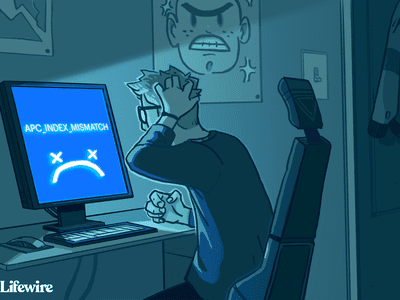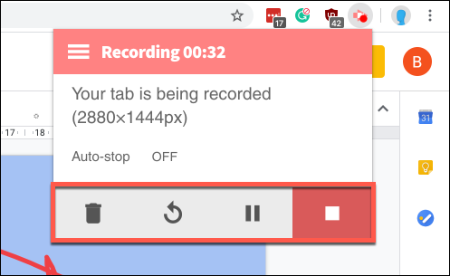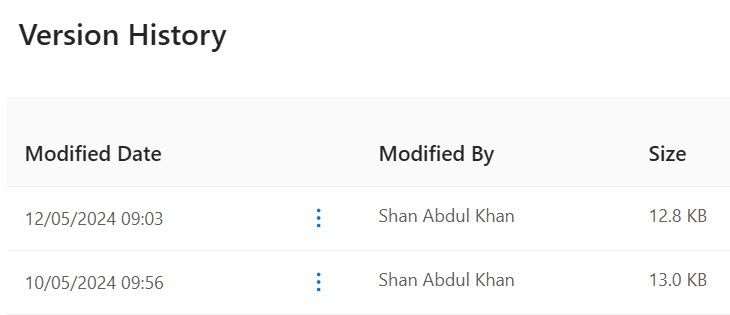
AI Content Generation: What Can You Do If Your Job Is Now Considered Automated?

AI Content Generation: What Can You Do If Your Job Is Now Considered Automated?
Quick Links
- Explain Why AI Detectors Don’t Work
- Share the Earlier Stages of Your Work
- Keep a Record of References and Sources
- Screen Record Your Work Process
- Demonstrate Your Unique Style and Approach
- Use Tools That Track Version History
- Get a Reference From a Colleague Who Saw You Working
- Avoid Working With Clients Who Don’t Trust You
With AI tools becoming more advanced, distinguishing original work from AI-generated has become difficult. Imagine spending half a day on a project only to have your client label it AI-generated. While this can be frustrating, you have a few options to counteract their claim.
1 Explain Why AI Detectors Don’t Work
Your client or boss has likely relied on an AI detection tool to claim your work is AI-generated. Therefore, your first step should be to explain that AI detectors are prone to false positives (flagging human-written content as AI-generated) and false negatives (failing to identify AI-generated content).
To support your argument, analyze the flagged content using a different AI detector, which might mark your work as human-written. Present these results to your client. You can take an older published work from before the era of generative AI, run it through the same tool your client used, and demonstrate that it could also be flagged as AI-generated.
You can also share articles (like this from Ars Technica ) with your client where experts have discussed the inaccuracies of AI detectors and advise against their use. Mention that even OpenAI, a leading company in the AI space, has shut down its AI detector due to low accuracy.
2 Share the Earlier Stages of Your Work

If your client doesn’t trust the final version, demonstrating the hard work behind it can help prove your content is original.
If you’re an artist, share rough sketches or concept art to show the initial stages. Capture screenshots or take images of your work at various stages, and explain the different phases your design underwent before reaching the final version. If you have saved files of unfinished versions, share those too.
If you’re a writer, present the initial outline and mind map. If you work on assignments in different drafts and have saved those unfinished drafts, share them with the client to confirm that it’s your work. Explaining how you refined your first draft to the final piece can help your client trust the authenticity of your work.
3 Keep a Record of References and Sources
AI tools can make things up, and that includes fake citations. Keeping track of references and sources you’ve used and sharing them with your boss demonstrates the thorough research you’ve done. Organizing sources for each section can further highlight your efforts.
As you work, link to external sources in your content. Similarly, if you’ve used images, icons, or other elements from other sources in your design, reference them to illustrate the hard work involved.
4 Screen Record Your Work Process

Perhaps the most compelling way to prove your work is original is to screen-record your process and share a time-lapse video . Screen recordings provide a detailed, visual record of your workflow, capturing every step. You can also create timestamps for different sections of the project you’ve completed.
This method shows, in real time, all the sources and techniques you’ve used. It highlights the errors you made and how you corrected them, demonstrating the refinement of your work. Sharing such a video serves as crucial proof of your efforts. Additionally, if a client refuses to pay for your work, the video can be evidence against them.
5 Demonstrate Your Unique Style and Approach
Emphasizing your unique writing or design style is another way to highlight the originality of your work. If you’ve completed similar projects for the same client, demonstrate how consistent your style is across these projects. Likewise, show your client sections or aspects of your work that AI cannot replicate.
If your client has specific requirements, demonstrate how you have tailored your writing or design to meet them. If you use a particular color scheme, writing structure, or design patterns, showcase these elements to your client. If you have received feedback from the client in the past, show how you have addressed those points in your recent work.
If working for a specific audience, explain how you have carefully adapted your content to meet their needs. If this is your first project with a particular client, share examples of your past work to show consistency and authenticity. This helps establish trust and prove that your work is genuinely yours.
6 Use Tools That Track Version History
Using tools that automatically record the version history is an excellent way to demonstrate the originality of your work. These tools document the evolution of your document, from initial drafts to final versions, showing all additions, deletions, and modifications, along with their timestamps. They also record any collaboration or feedback incorporated into your work.

I use Evernote or Google Docs, which simplify tracking of version history . Most writing and note-taking tools offer this feature; just remember to enable it.
If you’re a professional designer, tools like Adobe Photoshop, Illustrator, and Figma can help you track the progress of your design work.
Features such as the history palette and layer history log all actions performed within the design software, which you can share with your client. Some tools can capture snapshots of various stages in your design process; you can save these as references. This way, you can effectively prove the originality of your work.
7 Get a Reference From a Colleague Who Saw You Working
While this tip won’t help if you work remotely or as a freelancer, it can be helpful in an office environment. If your boss identifies your work as AI-generated, ask a colleague who saw you working on the project to vouch for its originality. If you encounter issues and look for help or recommendations from someone in the office, ask them to share this with your boss.
8 Avoid Working With Clients Who Don’t Trust You

Trust is a foundational element of any professional relationship, and working with clients who constantly doubt your ethical standards isn’t ideal.
This mistrust can affect the quality of your work, disrupt your peace of mind, and increase your anxiety. Constantly having to defend the authenticity of your work is also a poor use of your time. Therefore, it’s best to let go of clients who cause such issues and focus on those who appreciate and trust your work.
Collaborating with clients who respect professional boundaries allows you to work with greater peace of mind, increasing the likelihood of building long-term relationships and securing repeat business. Over time, you’ll hopefully develop the ability to identify red flags early and say “No” to shady clients.
Seeing your hard work dismissed as AI-generated is frustrating. Hopefully, you better understand how to fight these claims from your client or boss.
- Title: AI Content Generation: What Can You Do If Your Job Is Now Considered Automated?
- Author: Frank
- Created at : 2024-08-29 01:38:14
- Updated at : 2024-08-30 01:38:14
- Link: https://tech-revival.techidaily.com/ai-content-generation-what-can-you-do-if-your-job-is-now-considered-automated/
- License: This work is licensed under CC BY-NC-SA 4.0.



